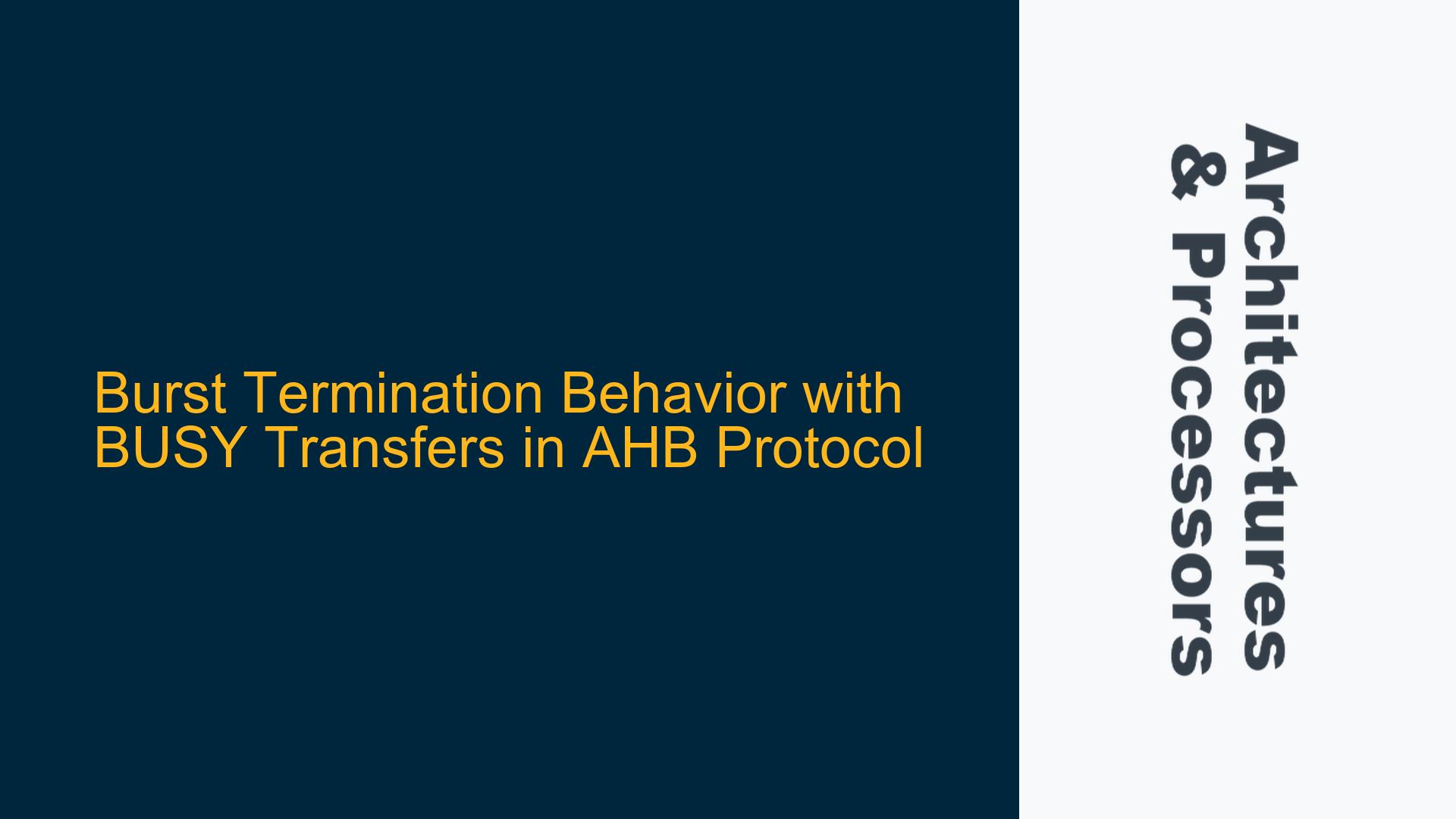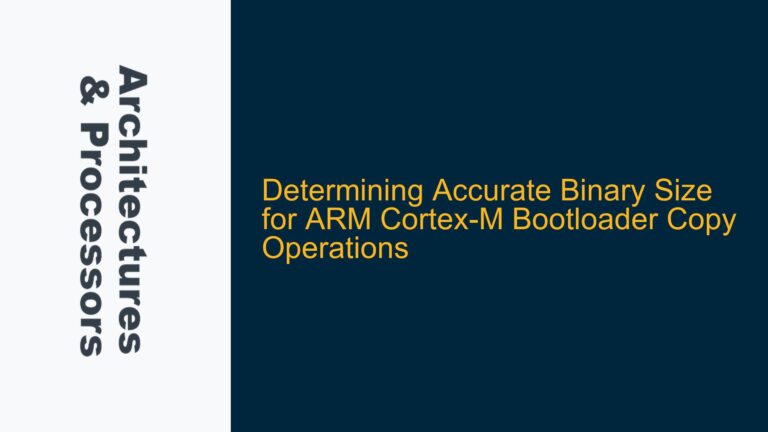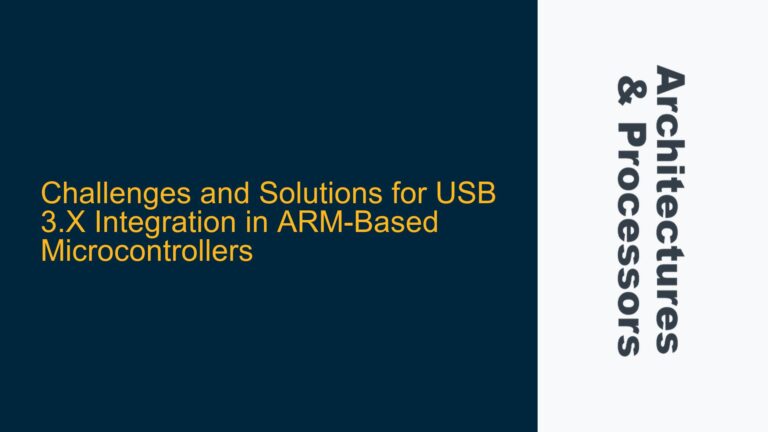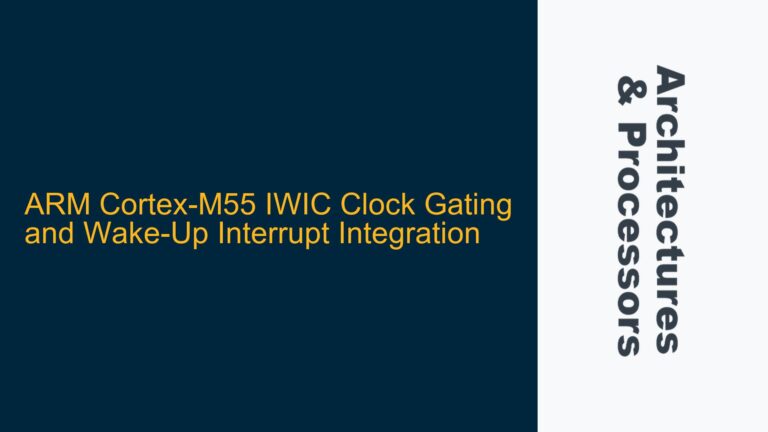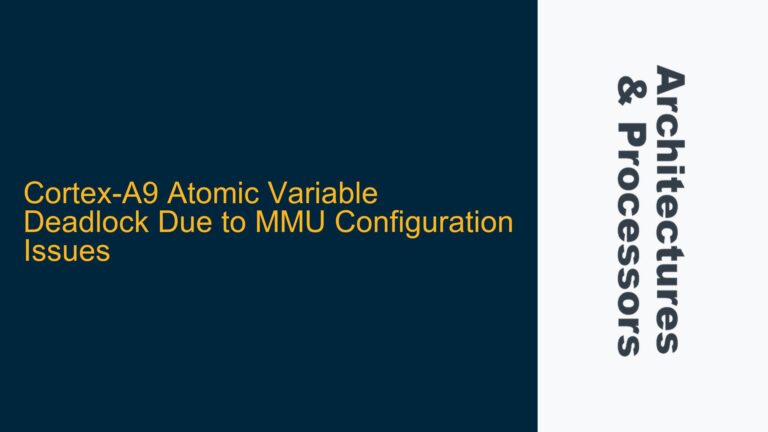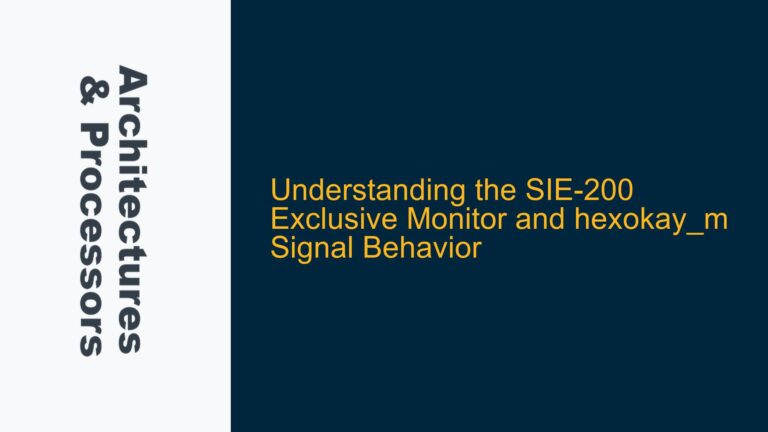ARM AHB Protocol: BUSY Transfer Impact on Undefined-Length Bursts
The ARM Advanced High-performance Bus (AHB) protocol is a widely used on-chip communication standard for high-performance system-on-chip (SoC) designs. One of the key features of AHB is its support for burst transfers, which allow efficient data movement between masters and slaves. Burst transfers can be of fixed length (e.g., INCR4, WRAP8) or undefined length (INCR). A critical aspect of AHB protocol behavior is the handling of BUSY transfers during burst operations, particularly for undefined-length bursts.
In the AHB protocol, the HTRANS signal is used by a master to indicate the type of transfer being performed. The BUSY transfer type is used by a master to insert idle cycles into a burst without terminating the burst. However, there is often confusion about how BUSY transfers affect undefined-length bursts (INCR). Specifically, whether a BUSY transfer can terminate an INCR burst or if it merely pauses the burst.
The AHB protocol specification does not mandate that a BUSY transfer terminates an undefined-length burst. Instead, the master has the flexibility to decide whether to continue or terminate the burst after a BUSY transfer. This behavior is often misunderstood, leading to incorrect assumptions in both design and verification phases. The confusion arises from the interplay between the master’s intent, the arbitration logic, and the protocol requirements.
Misinterpretation of BUSY Transfer Behavior in INCR Bursts
The primary source of confusion stems from the misinterpretation of the BUSY transfer’s role in undefined-length bursts. Some designers and verification engineers incorrectly assume that a BUSY transfer inherently terminates an INCR burst. This misconception likely arises from oversimplified interpretations of the protocol or from specific implementations where arbitration logic uses BUSY transfers as an opportunity to rearbitrate the bus.
In reality, the AHB protocol allows a master to insert BUSY transfers within an INCR burst without terminating the burst. The master can choose to continue the burst after the BUSY transfer by issuing a SEQ (sequential) transfer. This behavior is explicitly supported by the protocol and is demonstrated in various ARM documentation examples. However, the master also has the option to terminate the burst after a BUSY transfer, depending on its internal state and requirements.
The confusion is further compounded by the behavior of arbitration logic in some implementations. While the protocol does not require arbitration logic to rearbitrate the bus during BUSY transfers, some designs may use BUSY transfers as a cue to switch to another master. This design-specific behavior can lead to the incorrect assumption that BUSY transfers inherently terminate INCR bursts. However, this is not a protocol requirement and should not be generalized.
Correcting BUSY Transfer Handling in AHB Designs and Verification
To address the confusion and ensure correct implementation and verification of BUSY transfer behavior in AHB designs, the following steps should be taken:
Understanding the Protocol Specification: Designers and verification engineers must thoroughly review the AHB protocol specification, particularly the sections related to burst transfers and the HTRANS signal. The specification clearly states that BUSY transfers do not inherently terminate INCR bursts. Instead, the master has the flexibility to continue or terminate the burst after a BUSY transfer.
Master Implementation Guidelines: When designing an AHB master, the logic for handling BUSY transfers in INCR bursts must be carefully implemented. The master should be capable of inserting BUSY transfers without terminating the burst and should have the ability to decide whether to continue or terminate the burst based on its internal state. This requires clear state machine design and proper handling of the HTRANS signal.
Arbitration Logic Considerations: Arbitration logic should be designed to handle BUSY transfers in a manner consistent with the protocol. While some designs may choose to rearbitrate the bus during BUSY transfers, this should not be assumed as a default behavior. The arbitration logic should be verified to ensure it does not incorrectly terminate INCR bursts based on BUSY transfers.
Verification Strategies: Verification environments should include test cases that cover the behavior of BUSY transfers in INCR bursts. These test cases should verify that the master can insert BUSY transfers without terminating the burst and that the arbitration logic handles BUSY transfers correctly. Coverage metrics should be defined to ensure that all relevant scenarios are tested.
Debugging and Analysis: During the verification process, any unexpected termination of INCR bursts should be thoroughly debugged. This includes analyzing the master’s state machine, the arbitration logic, and the interactions between different components on the bus. Protocol checkers and assertions can be used to detect violations of the AHB protocol related to BUSY transfers.
By following these steps, designers and verification engineers can ensure that their AHB implementations correctly handle BUSY transfers in undefined-length bursts, avoiding common pitfalls and misunderstandings. This will lead to more robust and compliant designs, reducing the risk of integration issues and improving overall system performance.
